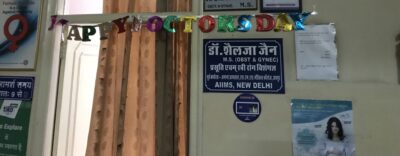Main content
The working party Tropical Eye Care, founded in 1973, aims to improve eye care in low- and middle-income countries. It organises two scientific symposia every year, provides training to Dutch AIGT doctors, and every two years it offers a two-day international training course in Utrecht.
The changing role of technology in ophthalmology
Ophthalmology is a wonderful part of medicine. It requires a wide range of skills, from psychology to microsurgery. In the past, the NVTG working group Tropical Ophthalmology put considerable emphasis on the development and implementation of ‘appropriate technology’ in eye care. In 1980, Professor Jan Worst founded the Intermediate Technology Information Ring (ITIR), an eye care knowledge centre in Groningen. The focus of the centre was to collect and disseminate simple technical solutions that are easy to apply in resource-constrained settings. The work at the centre ceased in 1996, but their archive is still intact with a rich compilation of publications available online.[1] Low resource solutions are presented such as how to make an eyelid retractor from a paperclip and how to make atraumatic suture material from disposable needles and nylon fishing line or even from stainless steel wire. Some of these ‘tricks’ are still useful, but our world is changing. Diseases such as onchocerciasis (river blindness) and trachoma are becoming less prevalent and have almost disappeared in many countries. For ophthalmologists trained in the Netherlands, it can be an attractive adventure to practise their skills using appropriate technology, but a colleague in Africa or South Asia who was able to familiarise himself with high-tech ophthalmology during training still has to deal with a local working environment at home in which such technology is often not available.
Technical advances in telecommunication through smartphones and the Internet have facilitated the diagnosis of eye diseases and refractive errors. Intraocular lenses and spectacles are increasingly being manufactured in cheap labour countries and have become much more affordable. But challenges remain. The production of a promising low-cost ophthalmoscope has been delayed, and several smartphone-based gadgets for fundus photography still do not deliver the quality images that are needed to make a reliable diagnosis. Since high-tech phacoemulsification (see Textbox) has now become the standard method for cataract surgery in high-income countries, our colleagues in LMICs have reasons to be unhappy when we suggest that a much cheaper method, sutureless small incision cataract surgery (SICS), is a good alternative.[2] Retinal disease as a result of diabetes mellitus is becoming a significant cause of poor vision and blindness worldwide. Its prevention and treatment pose challenges in LMICs, as low-cost laser machines are not available on the market.
| Phacoemulsification Phacoemulsification is a modern form of cataract surgery in which the eye’s internal lens is emulsified with an ultrasonic device and aspirated from the eye. Aspirated fluids are replaced with irrigation of balanced salt solution to maintain the anterior chamber. |
Looking back, considerable progress has been made globally in the delivery of eye care. The Vision 2020 global initiative programme launched in 1999, called ‘The Right to Sight‘, was set up to intensify and accelerate blindness prevention activities and set the very ambitious goal of eliminating avoidable blindness by 2020.[3] It sought to do this by focusing initially on the main causes of avoidable blindness, such as cataract and refractive errors, for which cost-effective treatment is available. It also stressed human resource development, particularly the training of auxiliary personnel. The more recent Global Health Action Plan, ‘Universal Eye Health‘ (2014-2019), adopted by the World Health Assembly in 2013, set a more modest global target of reducing the ‘prevalence of avoidable visual impairment by 25% by 2019’ (compared to the baseline prevalence of 2010).[4] Such initiatives have encouraged governments to pay more attention to the prevention of blindness. More eye care workers are being trained, and spectacles, intraocular lenses, sutures, slit lamps and operating microscopes have become widely available.
Looking forward, I am optimistic. IT-applications facilitate telemedicine and enable auxiliary staff in peripheral facilities to diagnose eye diseases. Mobile phone text messaging enables remote care and direct patient advice. However, the high cost of laser machines will continue to be a barrier in the treatment of diabetic retinopathy for some time to come.
References
- http://www.frankshospitalworkshop.com/equipment/ophthalmology_background.html
- Ammous I, Bouayed E, Mabrouk S, et al. Phacoémulsification versus chirurgie de cataracte par mini-incision manuelle: résultats anatomique et fonctionnels. Journal Français d’Ophtalmologie 2017; 40(6):460-66. Doi 10.1016/j.jfo.2017.02.005
- https://www.iapb.org/resources/vision-2020-global-initiative-1999/
- https://www.iapb.org/advocacy/global-action-plan-2014-2019/


















































